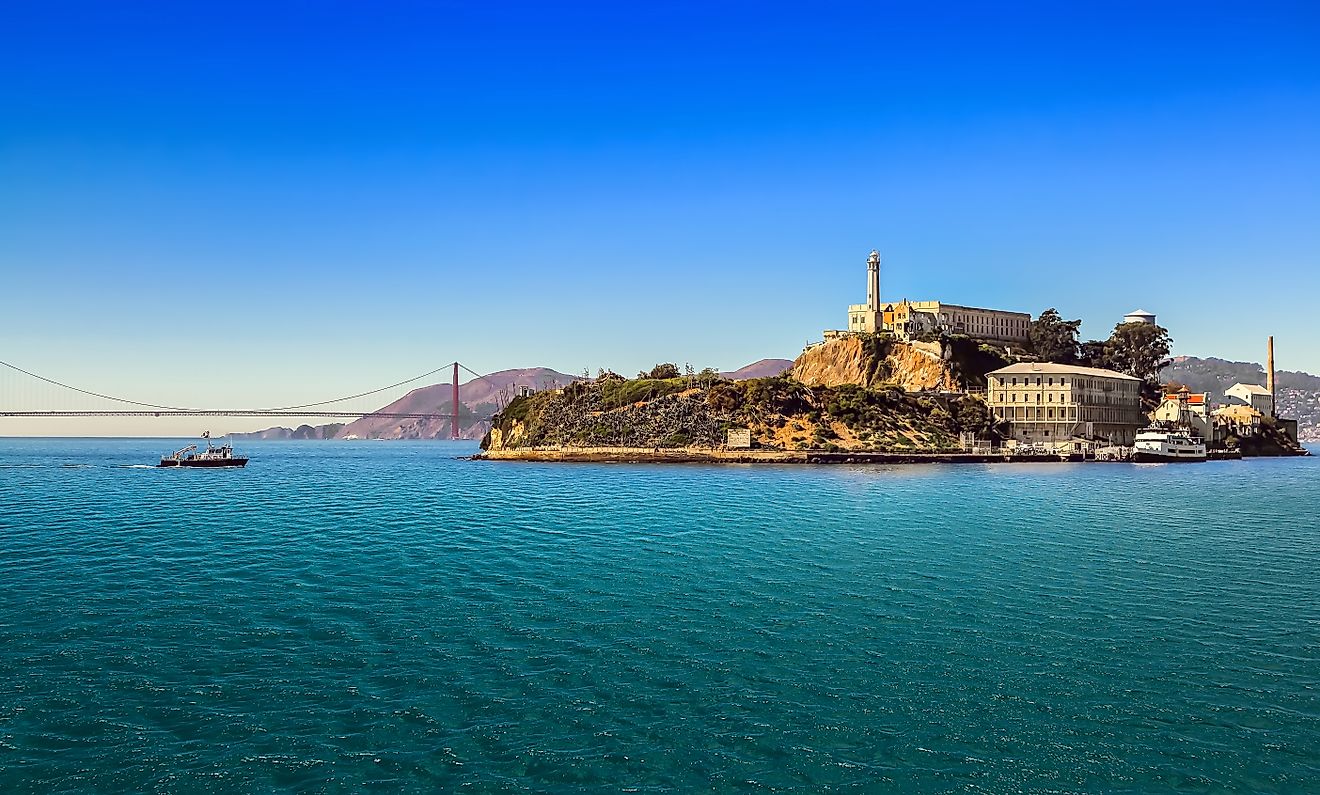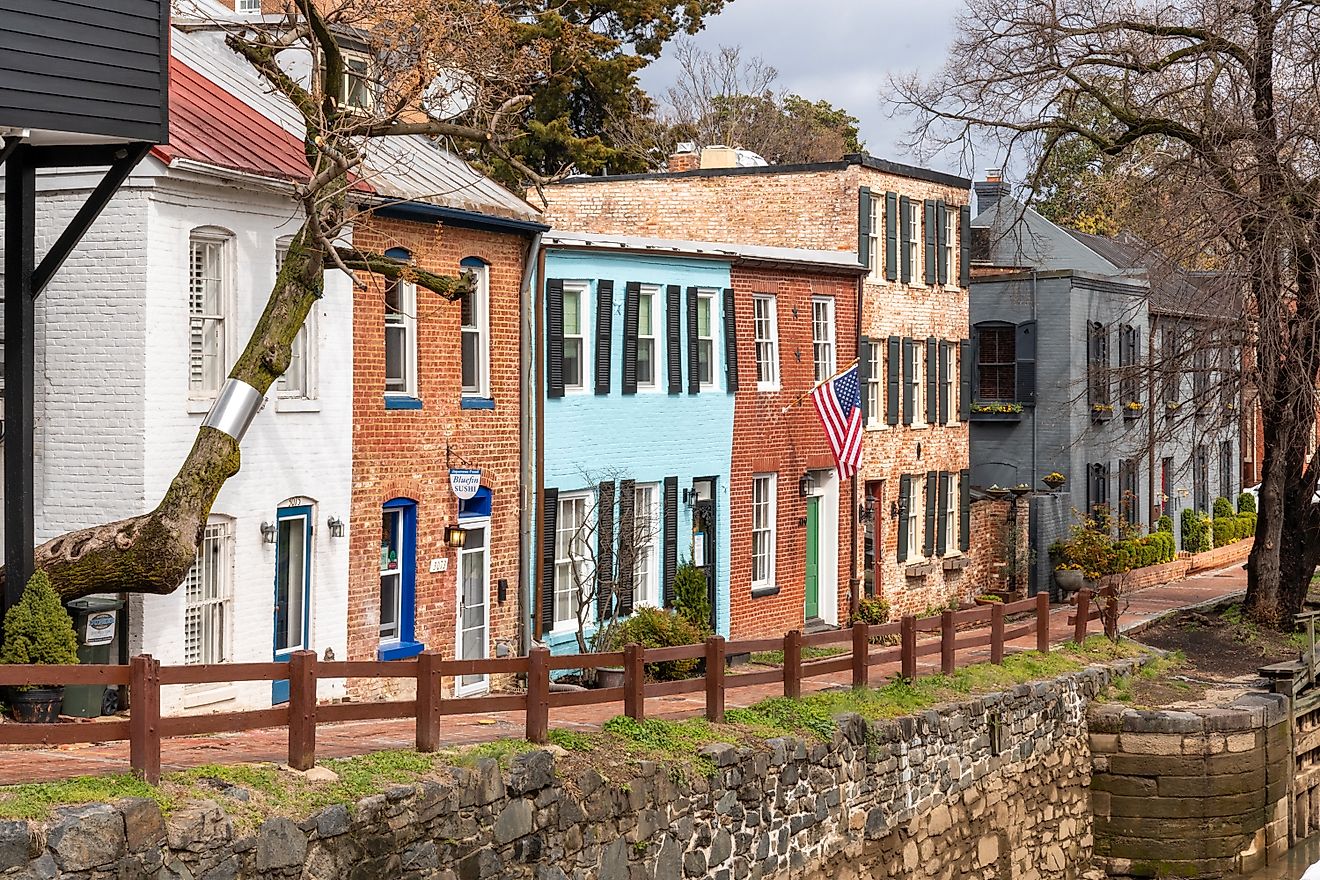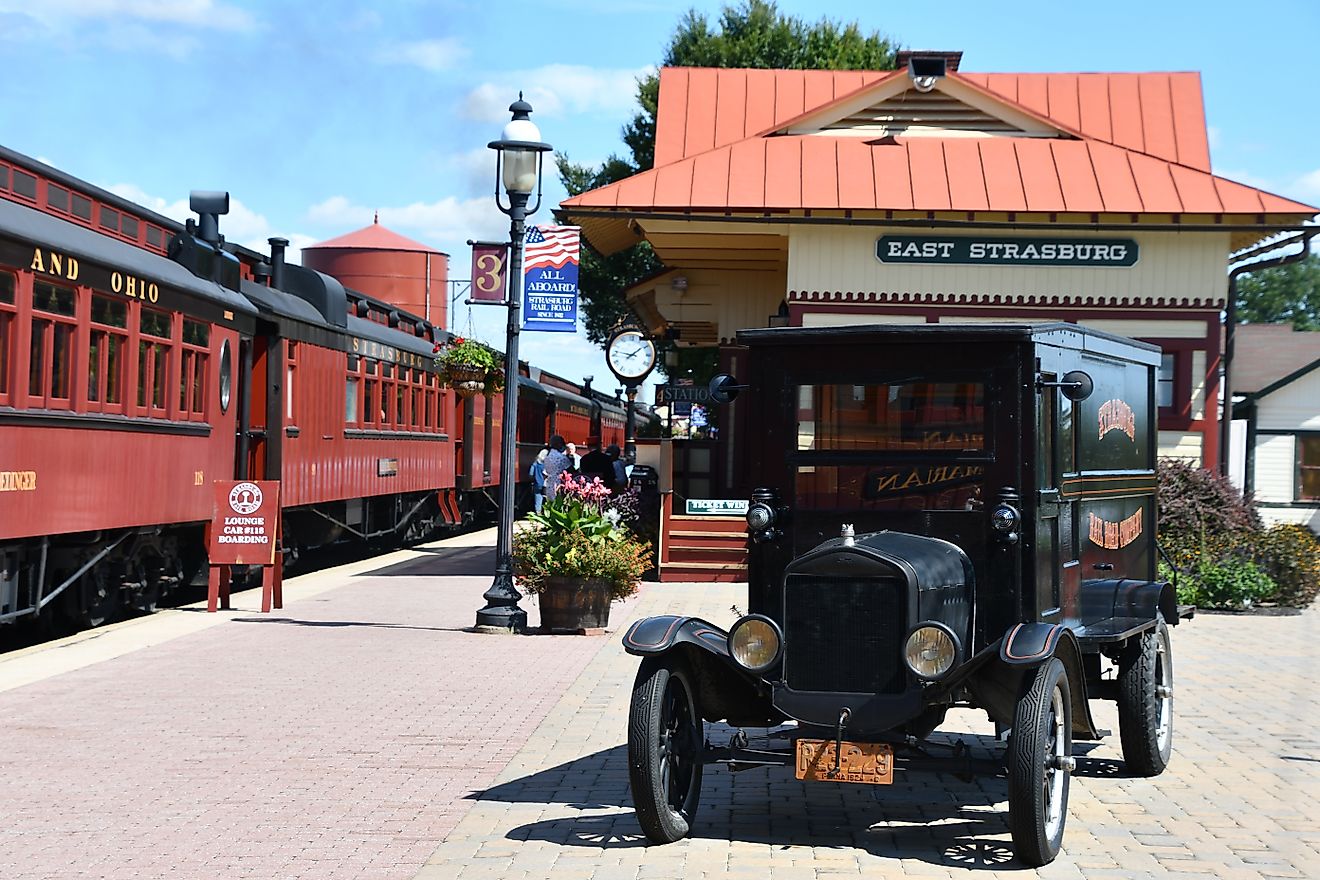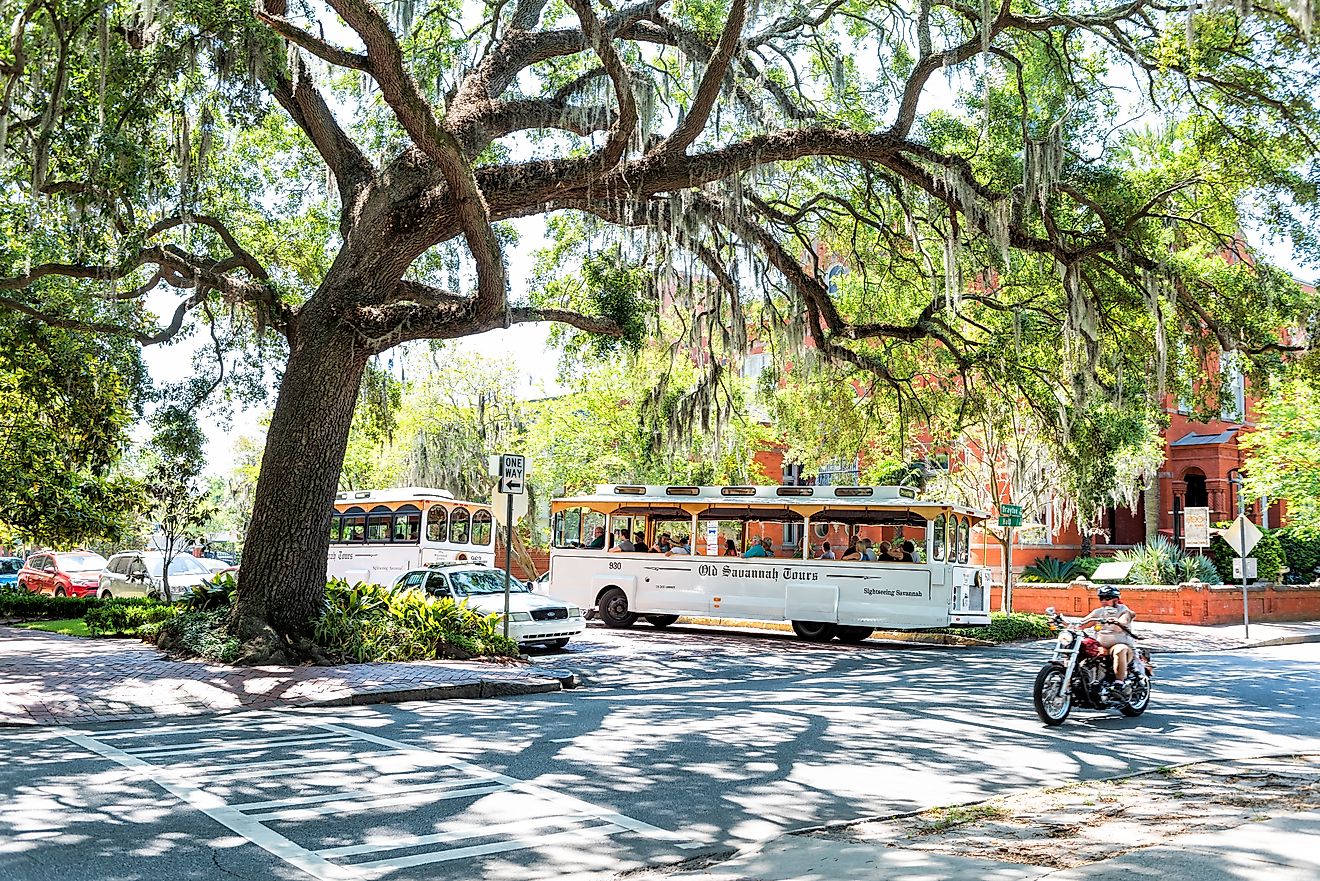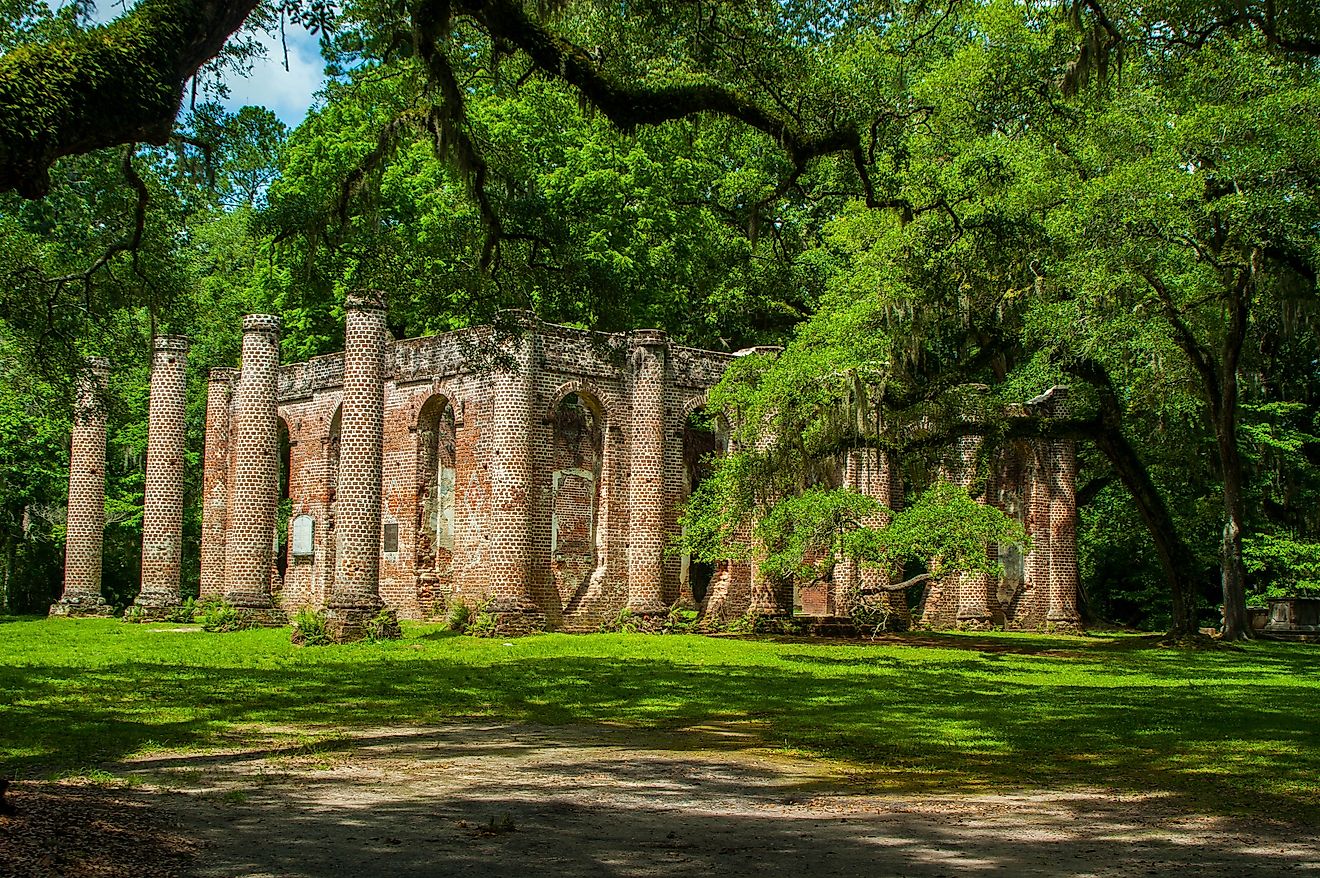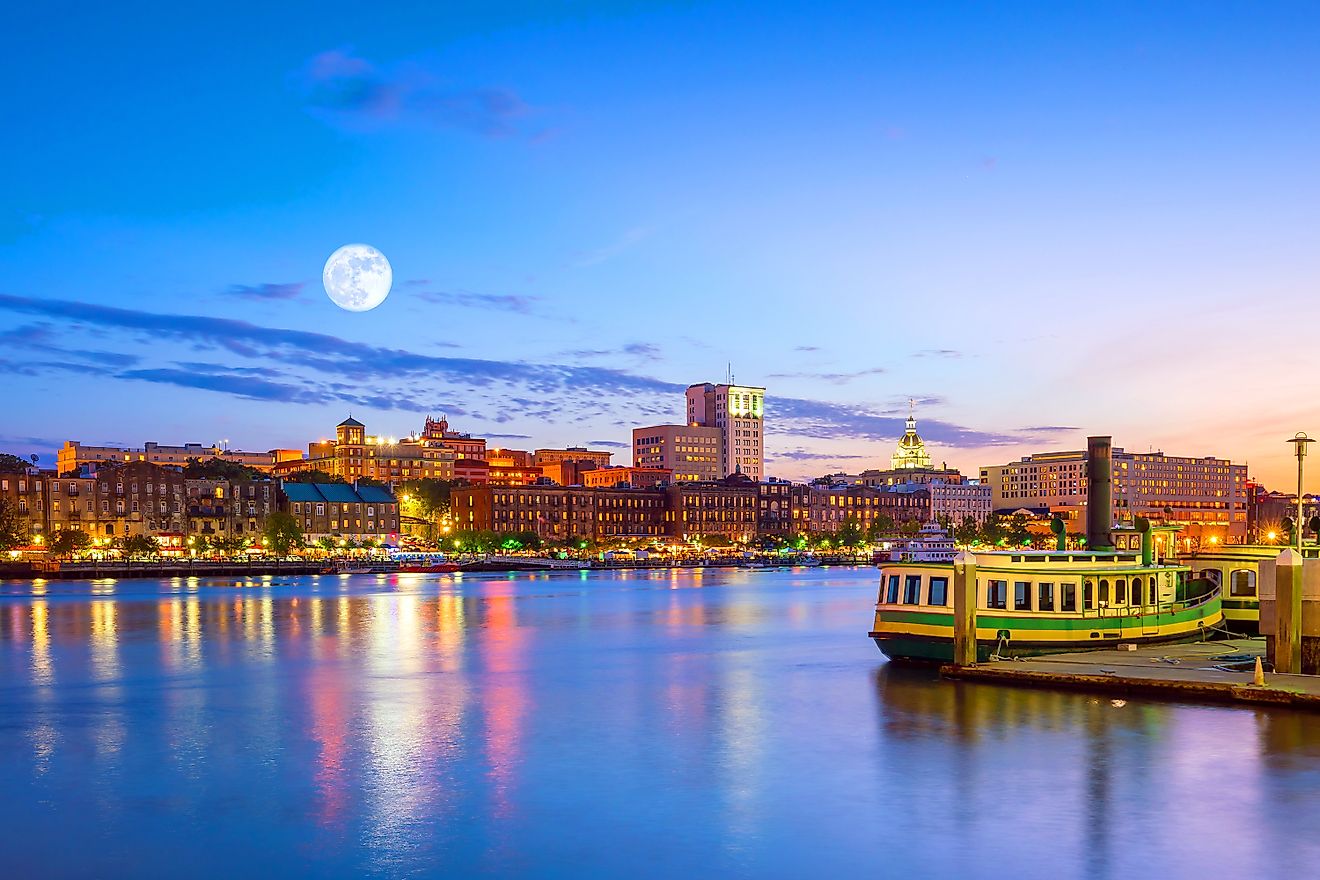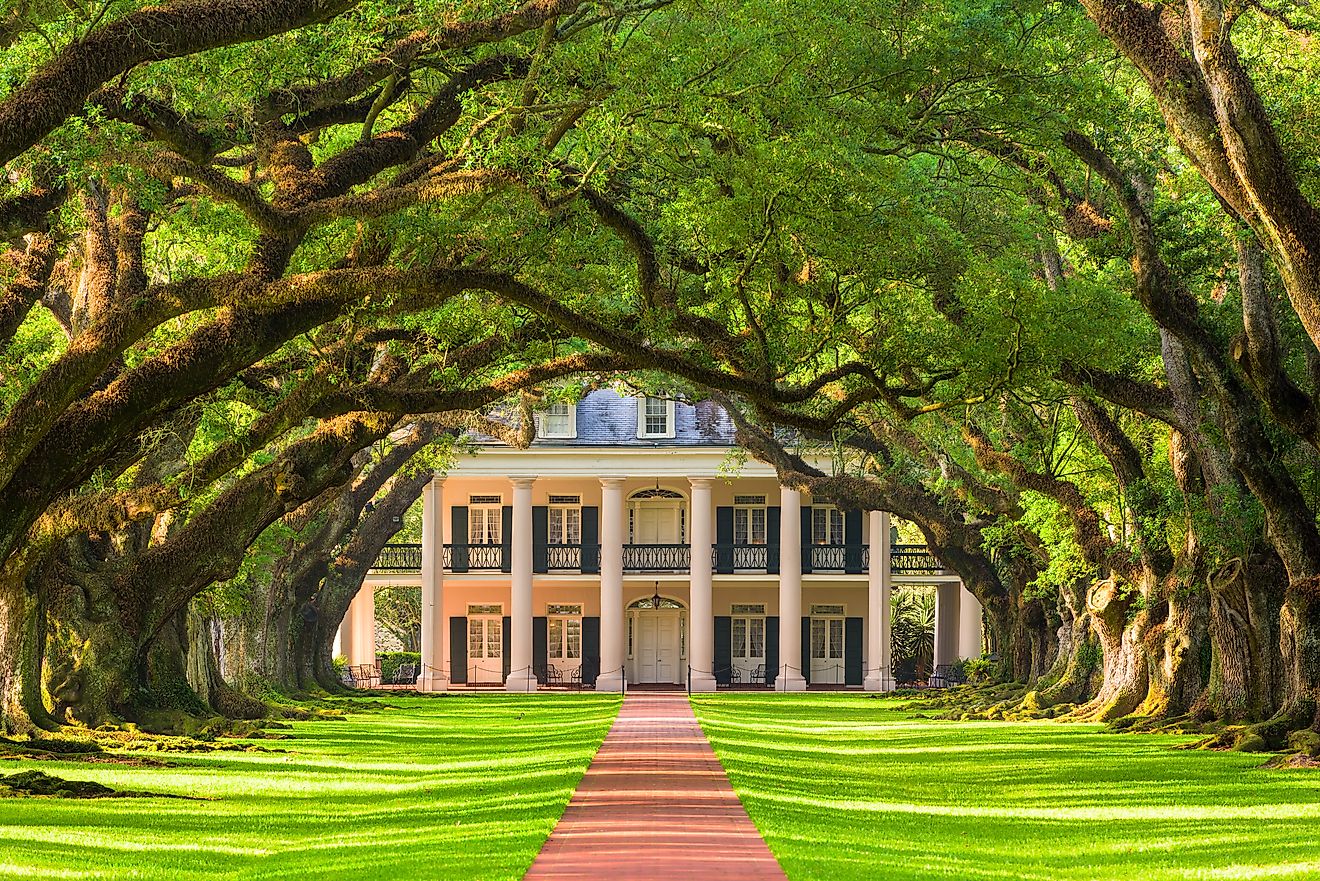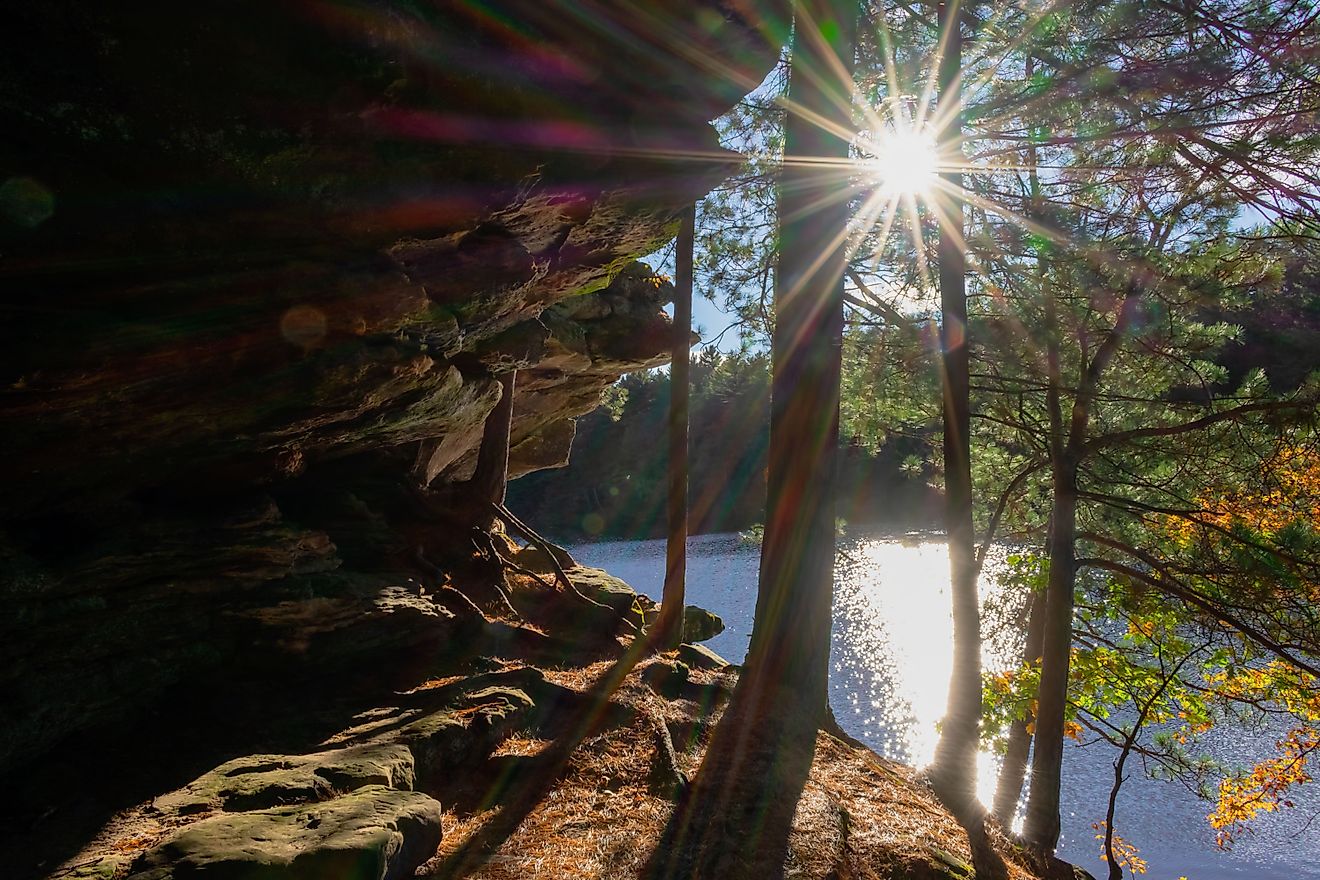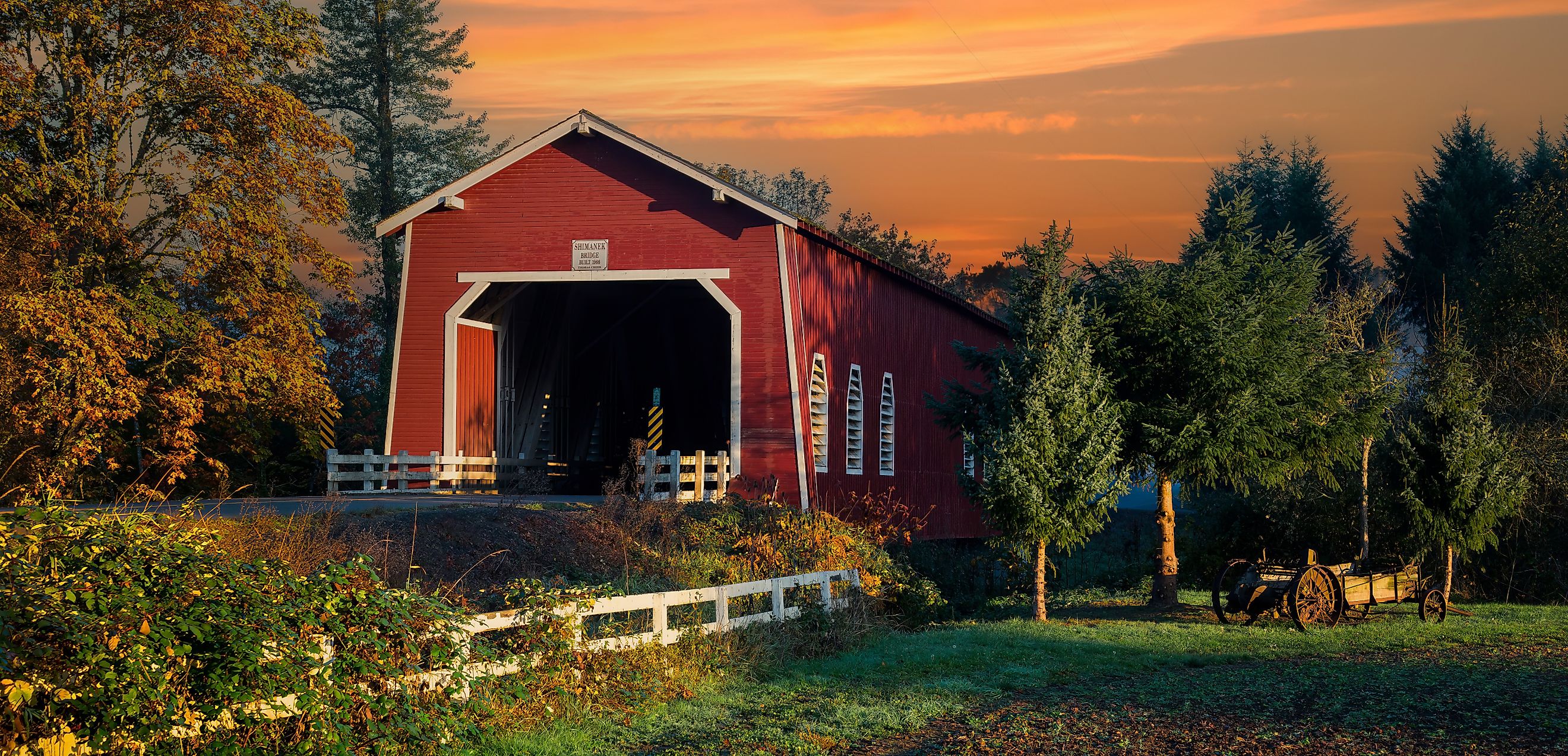
A Trip Through Oregon's Historic Covered Bridges
Oregon may be known for its rugged coastline and snow-capped peaks, but tucked into its river valleys and winding country roads are some of the most picturesque remnants of early 20th-century American engineering: historic covered bridges.
At one point, more than 450 covered bridges spanned Oregon’s waterways. Today, just over 50 remain, most of them lovingly preserved in the western part of the state. Built primarily between 1905 and 1955, these bridges weren’t just charming, they were practical. Covering the wooden trusses helped prevent rot from Oregon’s constant rainfall, significantly extending their lifespan.
Take a trip through seven of the most iconic and photogenic covered bridges in Oregon, each offering a unique look into the state’s history, architecture, and small-town culture. All of these bridges are still accessible and well-documented, making them perfect for photography, road trips, and heritage travel.
Goodpasture Covered Bridge
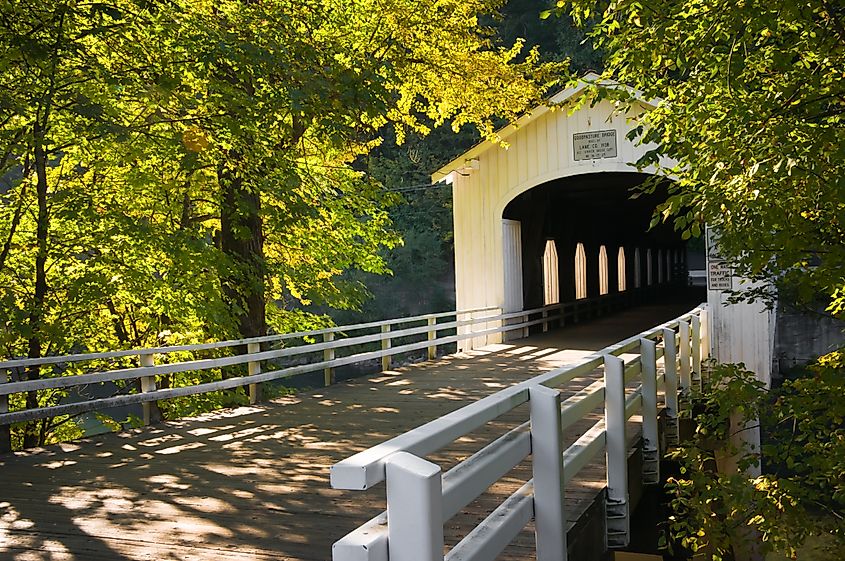
Location: Near Vida, Lane County
Built: 1938
Architecture: Howe Truss
Length: 165 feet
As Oregon’s second longest covered bridge, the Goodpasture Bridge spans the McKenzie River and serves as one of the most recognized and photographed in the state. Painted bright white and featuring large side windows, the bridge has a stately appearance as it connects to rural farms and scenic viewpoints near the McKenzie Highway.
The bridge was built by Lane County engineer H.R. Shelly during the New Deal era, using the Howe truss design, which blends vertical iron rods with heavy timber supports. Despite its age, the bridge still carries vehicle traffic and remains a crucial part of the community.
Goodpasture is especially stunning in the fall when the surrounding foliage reflects off the river, and it's a popular stop for travelers heading toward Blue River, Belknap Hot Springs, or Cougar Reservoir.
Lowell Covered Bridge
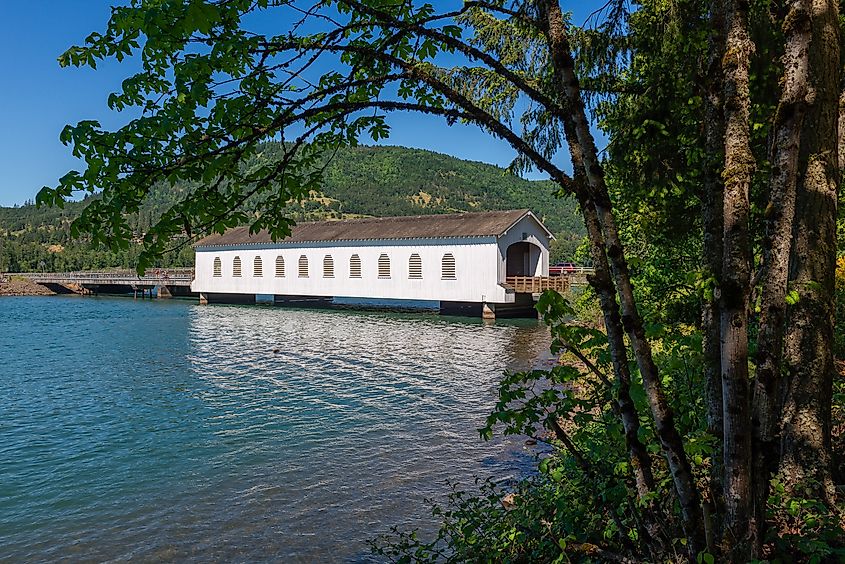
Location: Lowell, Lane County
Built: 1907
Architecture: Howe Truss
Length: 165 feet
Though it no longer carries vehicle traffic, the Lowell Covered Bridge stands as one of the most accessible and educational sites on this list. Originally built in 1907, rebuilt in 1945, and reconstructed in 2006 as a pedestrian and interpretive center, the bridge spans Dexter Reservoir, a large lake formed by damming the Middle Fork Willamette River.
This bridge replaced several earlier versions lost to flood and fire and was one of the last large covered bridges built in Oregon. It uses the familiar Howe truss, which was common during the era for its strength and simplicity.
Today, the bridge is part of a visitor complex with exhibits inside explaining the history of Oregon's covered bridges. A viewing platform offers scenic lake views and interpretive panels. It’s just off Highway 58, making it an easy detour for travelers heading toward Crescent Lake, Oakridge, or Crater Lake National Park.
Shimanek Covered Bridge
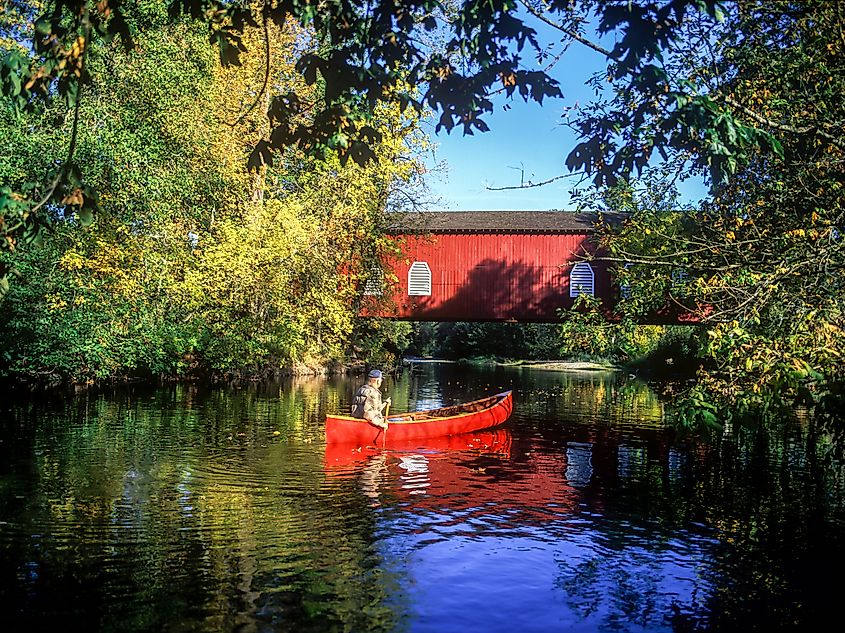
Location: Scio, Linn County
Built: 1966 (original 1891)
Architecture: Howe Truss
Length: 130 feet
Though the current Shimanek Covered Bridge was built in 1966, it carries the legacy of several earlier bridges that stood at the same spot, the first dating back to 1891. It crosses Thomas Creek, just outside the small town of Scio, often called the "Covered Bridge Capital of Oregon."
With its bold red paint and well-maintained structure, Shimanek is a standout among Oregon’s covered bridges. It uses the classic Howe truss and is built for light vehicle traffic. Due to structural wear, the bridge has undergone multiple closures and repairs in recent years, but it remains an essential stop on any covered bridge tour through the Willamette Valley.
Travelers can include it in a self-guided loop around Linn County that includes several other bridges, such as Hoffman, Hannah, and Gilkey.
Currin Covered Bridge
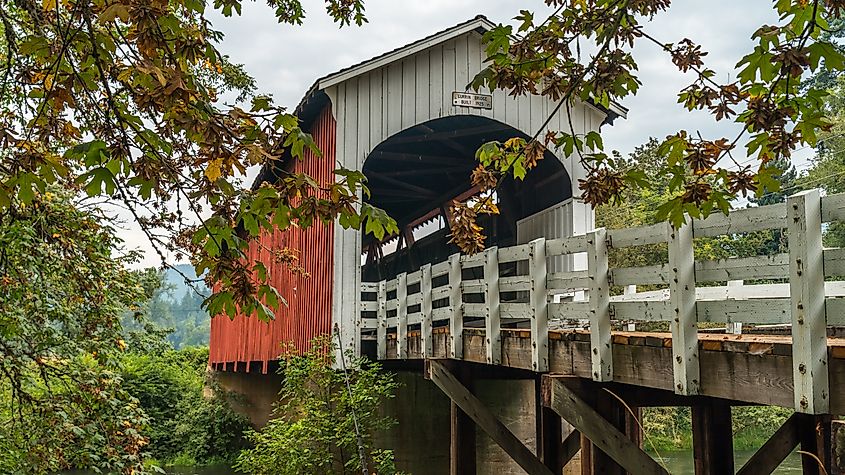
Location: Cottage Grove, Lane County
Built: 1925
Architecture: Howe Truss
Length: 105 feet
With its distinctive red sides and white portal trim, the Currin Covered Bridge is one of the most photogenic in the state. Spanning the Row River, this bridge originally replaced an older 1883 structure and was constructed to serve local farming and logging traffic.
Though closed to vehicles since the 1980s, the bridge remains open to pedestrians and is easy to access from Cottage Grove, a charming small town often used as a base for covered bridge explorers. The bridge stands just a few miles from the Row River Trail, a scenic multi-use path that follows a former railroad line.
The area surrounding the bridge is filled with oak and fir forests, and the low traffic makes it a quiet and peaceful place to walk, photograph, or enjoy a riverside picnic.
Chambers Railroad Covered Bridge
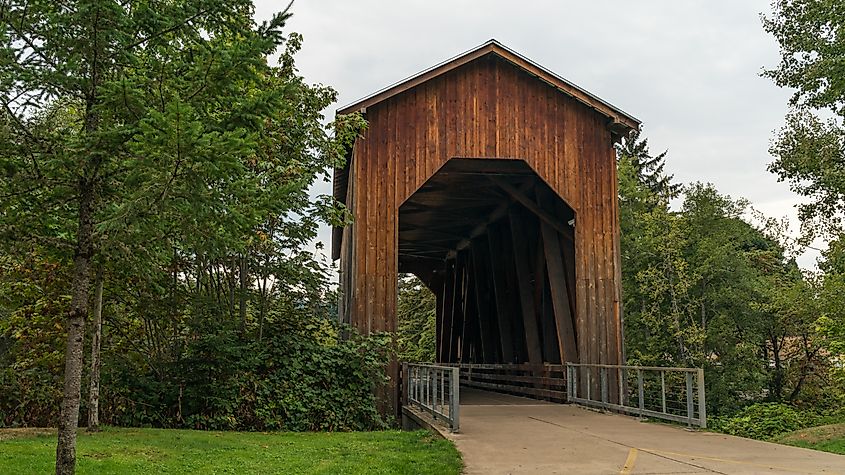
Location: Cottage Grove, Lane County
Built: 1925 (restored 2011)
Architecture: Howe Truss
Length: 78 feet
One of the few remaining railroad covered bridges west of the Mississippi River, the Chambers Covered Bridge is a rare piece of logging-era history. Built in 1925, it was used to move lumber from mills across the Coast Fork Willamette River to the Southern Pacific rail line. It fell into disrepair after the 1950s, but a complete restoration in 2011 transformed it into a pedestrian bridge and interpretive site.
Its Howe truss architecture and historical signage offer insight into the region’s timber industry and its role in developing southern Oregon communities. The bridge now sits within a park-like setting in the heart of Cottage Grove and is just steps from downtown shops, murals, and cafes.
Cottage Grove hosts an annual Covered Bridge Festival and driving tour, making it an ideal starting point for anyone interested in these historic structures.
Dorena Covered Bridge
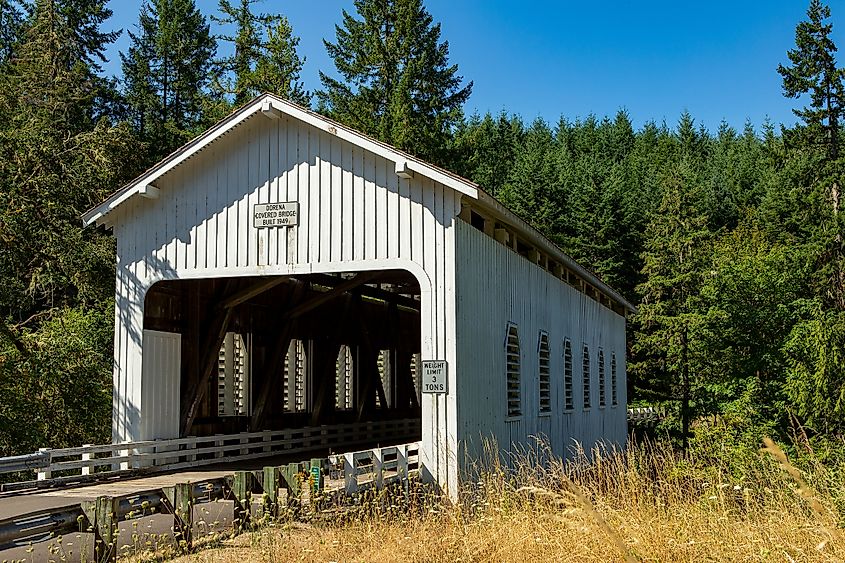
Location: Near Dorena, Lane County
Built: 1949
Architecture: Howe Truss
Length: 105 feet
Tucked just off the Row River Trail, the Dorena Covered Bridge was built in 1949 and once carried traffic along Shoreview Drive before being bypassed by a modern road. Today, the bridge is preserved for foot and bicycle traffic and serves as a trail connection and scenic stop for cyclists and walkers.
Like many Oregon bridges of its era, Dorena was built using the Howe truss, with vertical iron rods and diagonal wooden beams. Its location near Dorena Lake makes it popular with kayakers, anglers, and campers.
The bridge provides beautiful photo opportunities, especially during sunrise and sunset, when light filters through the trees and reflects off the water. It’s also one of the most accessible bridges in Oregon for families, cyclists, and those traveling with pets.
Office Covered Bridge (Westfir)
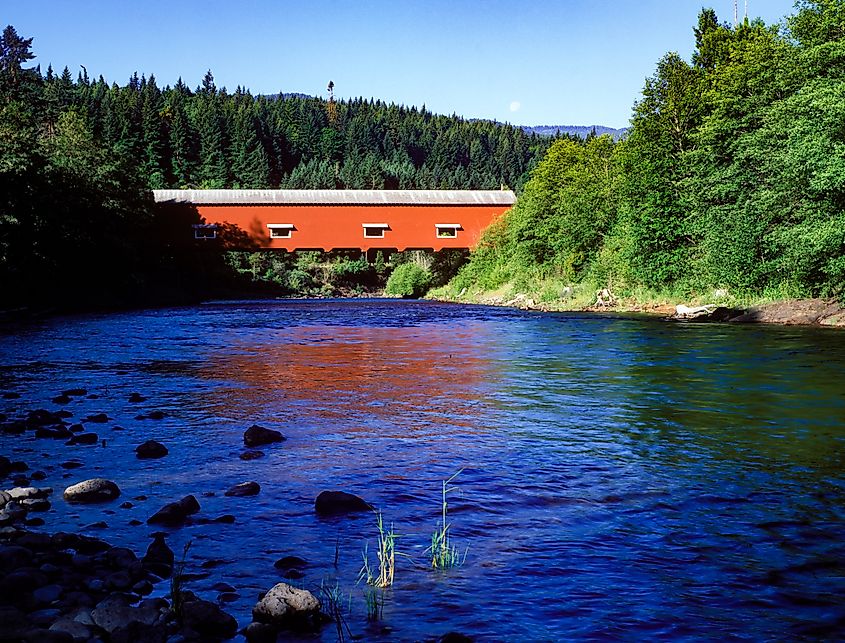
Location: Westfir, Lane County
Built: 1944
Architecture: Howe Truss
Length: 180 feet
Standing at 180 feet, the Office Covered Bridge in Westfir is the longest covered bridge in Oregon. Originally built in 1944 to connect the Westfir Lumber Company mill to its office (hence the name), the bridge has since been preserved for pedestrian use and stands as a community icon.
Its architecture is classic Howe truss, but with a distinctive covered walkway along one side that makes it stand out from other bridges in the state. The setting is picturesque, with the bridge crossing the North Fork Middle Fork Willamette River and opening into a small park with rest areas and interpretive signs.
Today, the bridge anchors the North Fork Trailhead, a gateway to miles of mountain biking and hiking in the Willamette National Forest. Visitors often combine the bridge with a stop in nearby Oakridge, known for its outdoor recreation and small-town charm.
Covered Bridge Styles: Why the Howe Truss?
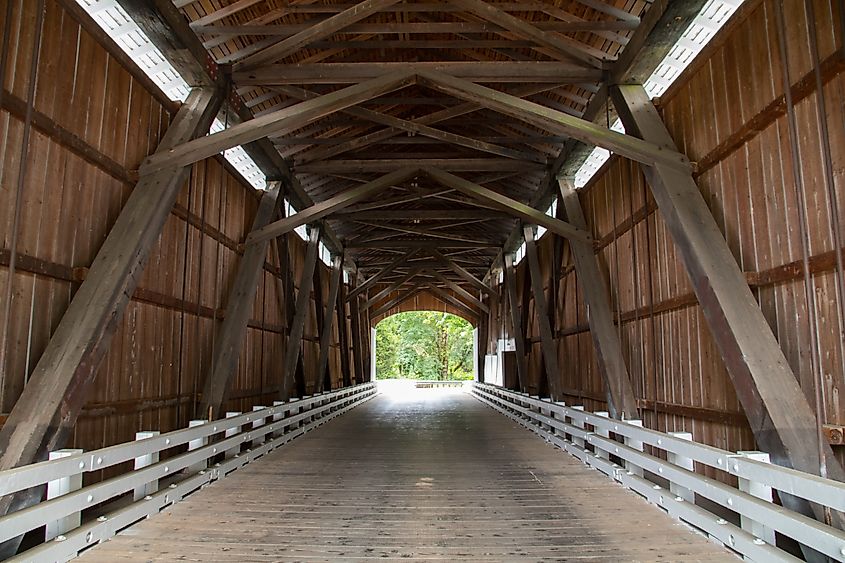
You may have noticed that all of the bridges on this list feature the Howe truss design. Developed by William Howe in 1840, this style became the go-to for Oregon bridge builders due to its strength, simplicity, and ability to span longer distances using local materials. The combination of wooden diagonals and vertical iron rods provided structural integrity without the need for complex fabrication.
The use of the Howe truss also helped Oregon’s Department of Transportation standardize bridge construction in rural areas throughout the early 20th century, which is why so many surviving examples still showcase this method today.
Best Time to Visit Oregon’s Covered Bridges
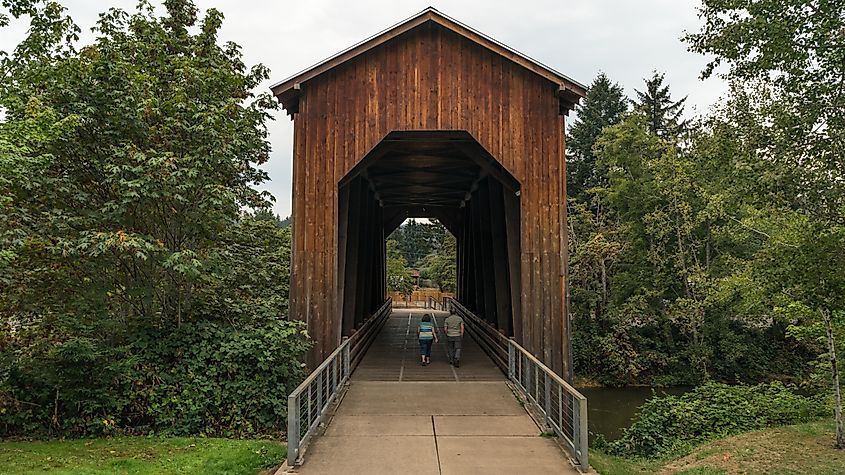
While these bridges can be visited year-round, certain times of year offer the best experience:
-
Spring (April–June): Rivers run high, and wildflowers bloom near many bridge sites.
-
Fall (late September–October): Vibrant foliage makes for exceptional photography, especially near Goodpasture, Currin, and Shimanek.
-
Summer: Warm, dry weather makes backroads and bike trails easier to navigate. It’s also the most popular time for local festivals and bridge tours.
Final Thoughts: A Journey Through the Past
Oregon’s covered bridges aren’t just charming roadside attractions, they’re carefully preserved pieces of engineering history and rural culture. Each one reflects a time when craftsmanship, local timber, and community needs shaped the infrastructure of small towns and farms.
Whether you’re driving through the forested backroads of Lane County or biking the Row River Trail, visiting these bridges feels like stepping into a quieter, slower era. The fact that so many are still standingmany is a testament to Oregon’s deep respect for its past and its enduring love for the wooden bridges that once connected it all.
